
ACI STRUCTURAL JOURNAL
Scope & Guideline
Empowering Professionals with Cutting-Edge Engineering Knowledge
Introduction
Aims and Scopes
- Concrete Behavior and Performance:
The journal publishes studies on the mechanical properties and performance of various types of concrete, including high-performance, ultra-high-performance, and geopolymer concrete. Research often investigates the effects of different reinforcement types, such as steel and fiber-reinforced polymers, on concrete behavior. - Seismic and Structural Resilience:
A significant portion of the research addresses the seismic performance of reinforced concrete structures, including the development of design methodologies and retrofitting techniques aimed at enhancing resilience against seismic events. - Innovative Reinforcement Techniques:
The journal explores novel reinforcement methods, including the use of composite materials like glass and carbon fiber-reinforced polymers. Research in this area focuses on how these materials can improve the strength, durability, and overall performance of concrete structures. - Advanced Modeling and Simulation:
There is a strong emphasis on the use of advanced modeling techniques, including machine learning and finite element analysis, to predict the behavior of concrete structures under various loading conditions. This includes studying shear, flexural, and torsional responses. - Sustainability in Structural Engineering:
The journal also covers research relating to sustainable practices in construction, such as the use of recycled materials, low-carbon concrete, and energy-efficient structural designs.
Trending and Emerging
- Integration of Machine Learning:
The use of machine learning techniques to predict structural behavior and optimize designs is becoming increasingly prevalent. This trend signifies a move towards data-driven approaches in structural engineering, enhancing predictive capabilities and efficiency in design processes. - Sustainability and Eco-Friendly Materials:
There is a noticeable increase in research focused on sustainable construction practices, particularly the use of recycled materials and low-carbon concrete. This aligns with global efforts to reduce the environmental impact of construction and promote greener building practices. - Advanced Reinforcement Materials:
Research into advanced reinforcement materials, specifically fiber-reinforced polymers and composite systems, is on the rise. This trend reflects the industry's interest in leveraging these materials to enhance structural performance and durability. - Seismic Retrofitting and Resilience Strategies:
An emerging focus on seismic retrofitting techniques and resilience strategies for existing structures is evident. This is crucial as urban areas continue to prioritize safety and resilience against natural disasters. - Digital Fabrication and 3D Printing:
Research exploring the applications of digital fabrication and 3D printing technologies in concrete construction is gaining momentum. This trend highlights the potential for innovative construction methods that can enhance efficiency and reduce waste.
Declining or Waning
- Traditional Reinforcement Methods:
Research on conventional steel reinforcement methods, while still relevant, has decreased as newer materials like fiber-reinforced polymers gain traction. The shift towards innovative composites has led to a reduction in the exploration of traditional steel reinforcement techniques. - Basic Concrete Mix Designs:
There appears to be a waning interest in studies focused solely on basic concrete mix designs without consideration of advanced materials or performance enhancements. Researchers are increasingly exploring specialized concrete types and their applications in modern engineering. - Static Load Testing:
The prevalence of studies centered on static load testing of concrete structures has diminished as dynamic loading conditions, including seismic and wind loads, become more critical in research agendas. This shift underscores a growing emphasis on real-world performance under various environmental conditions.
Similar Journals
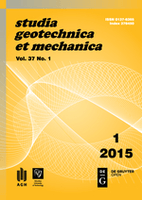
Studia Geotechnica et Mechanica
Innovating Civil Engineering Through Open Access ResearchStudia Geotechnica et Mechanica is a distinguished academic journal dedicated to the vital fields of geotechnics, civil engineering, and materials science. Published by SCIENDO, this Open Access journal has been facilitating unrestricted access to research since 2012, allowing for wide dissemination of innovative findings and methodologies. Based in Poland, it contributes significantly to the scholarly community by providing a platform for the exchange of ideas, techniques, and advancements relevant to Civil and Structural Engineering, Geotechnical Engineering, and related disciplines. With an increasing emphasis on applied research, Studia Geotechnica et Mechanica is classified in various quartiles, demonstrating its emerging influence in fields such as Computers in Earth Sciences and Mechanics of Materials. The journal is indexed in Scopus, showcasing its commitment to maintaining high academic standards. By publishing peer-reviewed research articles, this journal is essential for researchers, professionals, and students looking to stay at the forefront of developments in these critical areas of engineering and science.

Computers and Concrete
Fostering Collaboration in Concrete and Computational InnovationsComputers and Concrete is a leading academic journal published by TECHNO-PRESS, focusing on the interdisciplinary field of computational mechanics as applied to civil engineering and concrete materials. With an impressive impact factor consistent with its status in its category, this journal holds a prestigious Q1 ranking in Computational Mechanics for 2023, being recognized as one of the top journals within this domain. Since its inception in 2006, Computers and Concrete has provided a vital platform for researchers and professionals to disseminate innovative findings, fostering collaboration and knowledge exchange among an engaged community. The journal is available in both print and digital formats, ensuring accessibility to a wide audience of academics and practitioners alike. By featuring high-quality research articles, review papers, and technical notes, this journal plays a crucial role in advancing the understanding and application of computational techniques in the field of concrete and structural engineering.
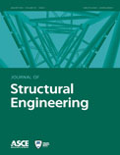
JOURNAL OF STRUCTURAL ENGINEERING
Advancing the Foundations of Structural InnovationThe JOURNAL OF STRUCTURAL ENGINEERING, published by the ASCE-AMERICAN SOCIETY OF CIVIL ENGINEERS, is a premier academic journal that focuses on the latest advancements in the field of structural engineering. With a rich history dating back to 1955, this journal has become a crucial platform for disseminating peer-reviewed research that addresses critical issues and innovative solutions in building and construction, civil and structural engineering, materials science, and mechanics. It proudly holds a Q1 quartile ranking across multiple categories in the 2023 Scopus rankings, indicating its influential presence in the academic community. The journal does not currently offer open access options, ensuring that the content is rigorously vetted for quality and relevance, thus appealing to researchers, industry professionals, and students seeking credible, impactful research. With contributions from leading experts, the JOURNAL OF STRUCTURAL ENGINEERING is essential reading for anyone interested in advancing their understanding and practice within this vital area of engineering.

International Journal of Concrete Structures and Materials
Driving Progress in Durable and Resilient EngineeringThe International Journal of Concrete Structures and Materials, published by SPRINGER, is a premier open-access journal dedicated to the field of civil and structural engineering, with a strong emphasis on concrete materials and their diverse applications. With an ISSN of 1976-0485 and E-ISSN of 2234-1315, this journal has established itself as a crucial resource since its inception in 2012, addressing pressing challenges in structural integrity and durability. With a remarkable impact factor and ranking in the Q1 category for both Civil and Structural Engineering and Ocean Engineering, this journal has garnered recognition and respect, ranking #18 out of 105 in Ocean Engineering and #81 out of 379 in Civil and Structural Engineering as per Scopus metrics. The journal’s open-access policy enhances the dissemination of knowledge, making cutting-edge research readily available to a global audience. Aimed at researchers, practitioners, and students alike, the International Journal of Concrete Structures and Materials strives to promote advancements in concrete technology and foster innovative solutions for contemporary engineering problems.
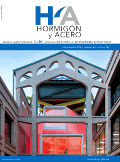
Hormigon y Acero
Elevating Standards in Concrete and Steel ApplicationsHormigon y Acero, an esteemed journal published by the ASOC ESPANOLA INGENIERIA ESTRUCTURAL-ACHE, serves as a vital resource in the fields of structural engineering and construction. With an ISSN of 0439-5689 and an E-ISSN of 2605-1729, this journal plays a critical role in disseminating innovative research and advancements from 2019 to 2024, particularly focusing on concrete and steel applications. Although it does not currently offer open access, its contributions remain invaluable to professionals and academics seeking to enhance their understanding and practices in engineering disciplines. Ranked within the 13th percentile in Building and Construction and the 9th percentile in Civil and Structural Engineering according to Scopus, Hormigon y Acero is recognized for its rigorous peer-reviewed content that addresses contemporary challenges and innovations within the industry. The journal is positioned in Madrid, Spain, and aims to foster collaboration and knowledge exchange among researchers, practitioners, and students dedicated to the advancement of structural engineering.
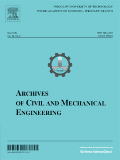
Archives of Civil and Mechanical Engineering
Unveiling Innovations for a Sustainable TomorrowArchives of Civil and Mechanical Engineering is a distinguished peer-reviewed journal published by SpringerNature, focusing on advancing the fields of civil and mechanical engineering. With an impressive Q1 ranking in both categories in 2023, this journal caters to a global audience, addressing the evolving challenges and innovations within these vital engineering disciplines. The journal has been a pivotal platform since its inception in 2006, and it continues to be essential for researchers and practitioners seeking to publish and access high-quality research. The absence of an Open Access option ensures that published works maintain rigorous academic standards, thereby enhancing their value within institutional repositories. With a robust impact factor and high visibility on Scopus—ranking #122 out of 672 in Mechanical Engineering and #74 out of 379 in Civil and Structural Engineering—this journal is an ideal venue for professionals, researchers, and students dedicated to advancing their knowledge and contributing to cutting-edge engineering practices. Based in Germany and operating internationally, the Archives of Civil and Mechanical Engineering invites submissions that address critical issues and solutions in contemporary engineering.
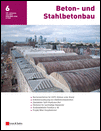
Beton- und Stahlbetonbau
Shaping the Future of Concrete ConstructionBeton- und Stahlbetonbau is a renowned journal published by ERNST & SOHN, dedicated to advancing knowledge in the field of building and construction, particularly focusing on concrete and reinforced concrete engineering. Established in 1969, this peer-reviewed publication encompasses a broad range of topics, including innovative construction methods, structural analysis, and material performance, making it a crucial resource for researchers, scholars, and industry professionals alike. With an impact factor ranking it within the Q2 category in the Building and Construction field, this journal holds significant influence, evidenced by its Scopus rank of #112/223. Importantly, Beton- und Stahlbetonbau is committed to providing high-quality content that meets the academic rigor demanded by its audience, ensuring that readers remain at the forefront of technological advancements and research in concrete construction.
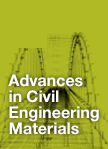
Advances in Civil Engineering Materials
Innovating the Future of Construction MaterialsAdvances in Civil Engineering Materials, published by the American Society for Testing and Materials, is a leading journal in the field of civil engineering, specializing in the innovative applications and developments of materials used in construction and infrastructure. With an ISSN of 2379-1357 and an impressive lineup of contributions from renowned researchers, this journal serves as a pivotal platform for disseminating groundbreaking research from 2012 to 2024, currently enjoying a category quartile ranking of Q2 across multiple disciplines including Ceramics and Composites, Civil and Structural Engineering, and Materials Chemistry. Though it operates under a subscription model, the valuable insights and advancements presented in the journal have a significant impact on both academia and industry practices. Researchers, professionals, and students are invited to explore the evolving landscape of civil engineering materials, gaining critical knowledge to drive innovations and contribute to the sustainability and safety of architectural endeavors.

STRUCTURAL ENGINEERING AND MECHANICS
Unveiling Insights into Structural Systems and MechanicsSTRUCTURAL ENGINEERING AND MECHANICS, a leading journal published by TECHNO-PRESS, stands at the forefront of research in the disciplines of civil, structural, and mechanical engineering. With an ISSN of 1225-4568 and an E-ISSN of 1598-6217, this South Korea-based journal has been a significant contributor to the academic community since its inception in 1994, and it continues to disseminate vital research through 2024 and beyond. Achieving a Q3 ranking in key categories such as Building and Construction, Civil and Structural Engineering, Mechanical Engineering, and Mechanics of Materials, the journal is recognized for its high standard of academic rigour and relevance in contemporary engineering challenges. Although not Open Access, it offers robust access options for institutions and professionals seeking to advance their understanding of structural systems and mechanics. Researchers, students, and practitioners in these fields will find invaluable insights and innovative studies that push the boundaries of knowledge, making this journal an essential resource for anyone invested in engineering advancements.

Advances in Concrete Construction
Shaping the Landscape of Modern ConstructionAdvances in Concrete Construction, published by TECHNO-PRESS in South Korea, is a pivotal academic journal dedicated to the fields of Building and Construction, Civil and Structural Engineering, and Mechanics of Materials. Established with the aim of fostering innovative research, this journal has rapidly gained recognition, achieving a commendable Q2 ranking across multiple categories, including Safety, Risk, Reliability, and Quality as of 2023. Featuring a blend of rigorous peer-reviewed articles, the journal serves as a vital platform for scholars, engineers, and students alike to disseminate cutting-edge research and practical applications in concrete construction technologies. Despite its absence of Open Access, the journal's inclusion in Scopus with notable rankings - such as #66 in Building and Construction - underscores its growing influence and commitment to quality as it converges on significant advancements from 2016 to 2024. By contributing to this respected journal, you join a community dedicated to exploring the future of sustainable and efficient construction practices.